You might think of skinny jeans as a staple in your wardrobe today, but their journey is anything but straightforward. Originating in the 1950s with icons like Audrey Hepburn, these fitted pants evolved through various cultural movements, from punk rock to high fashion. As styles shifted, their popularity waned and surged again, reflecting broader trends in society. So, how did skinny jeans manage to maintain such a resilient presence in fashion, even as preferences change? The answers might surprise you.
Historical Origins of Skinny Jeans
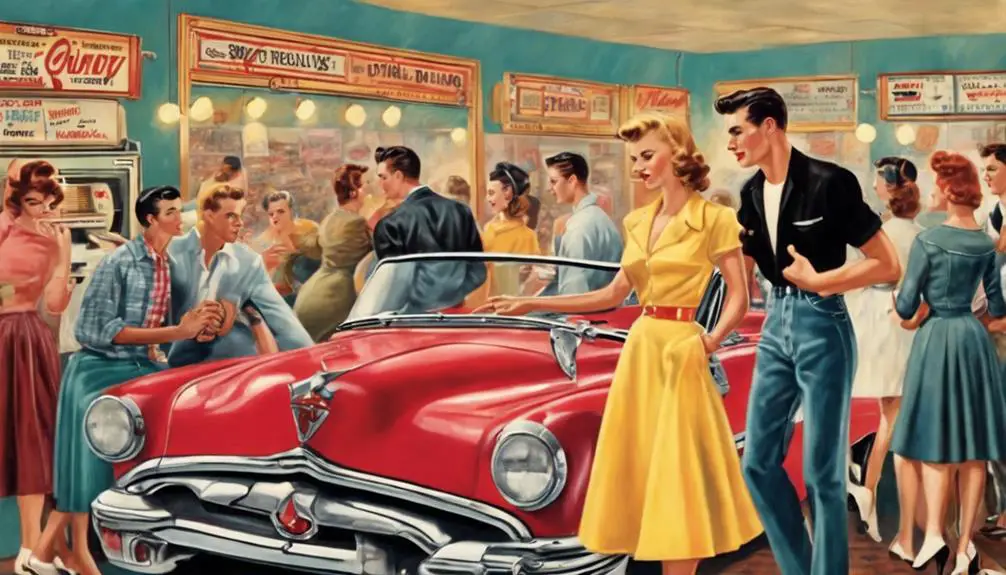
Skinny jeans have roots that stretch back to the 1950s, when silhouettes resembling them first emerged as cigarette pants, thanks to fashion icons like Audrey Hepburn and Marilyn Monroe. These early styles captured a sleek, chic aesthetic that defined the era and laid the groundwork for what would evolve into skinny jeans. While the 1960s saw a variety of denim styles, including bootcuts and flares, slim fits remained on the fringes of fashion until the late 1970s, when punk rock emerged as a powerful counterculture movement.
Punk bands like The Clash and The Ramones adopted skinny jeans as part of their uniform, solidifying their association with rebellion and nonconformity. The tight-fitting denim became a symbol of the punk ethos, challenging mainstream norms and embracing an edgy aesthetic. Fast forward to the 1980s, and you'll find skinny jeans making waves again, particularly among heavy metal bands. Performers like Bon Jovi and Guns N' Roses showcased super-tight styles, further embedding skinny jeans into the rock 'n' roll culture.
After a decline in the 1990s—thanks to the grunge movement's love for looser fits—skinny jeans experienced a resurgence in the mid-2000s. Fashion icon Kate Moss played a pivotal role in this revival, inspiring a new generation to embrace the flattering silhouette. Today, skinny jeans remain a staple in wardrobes, proving that their history is as rich and varied as the styles themselves.
Evolution Through the Decades
Throughout the decades, the evolution of skinny jeans reflects broader cultural shifts and style preferences. In the 1950s, the introduction of cigarette pants laid the groundwork for what would become a fashion phenomenon. Icons like Audrey Hepburn and Marilyn Monroe showcased the slim silhouette, which hinted at the future popularity of skinny jeans. Fast forward to the 1980s, and you see skinny jeans making waves, closely associated with heavy metal bands. Performers like Bon Jovi and Guns N' Roses rocked super-tight styles, blending music and fashion in a way that defined an era.
However, the 1990s brought about a significant shift. The grunge movement favored looser-fitting jeans, causing skinny jeans to fall out of favor. But just when you thought they were gone for good, a resurgence occurred in the mid-2000s. This revival can be credited largely to Kate Moss, who was spotted wearing skinny jeans on a date in 2005. TIME magazine even dubbed her the catalyst for the 2006 skinny jean craze.
Cultural Impact and Significance
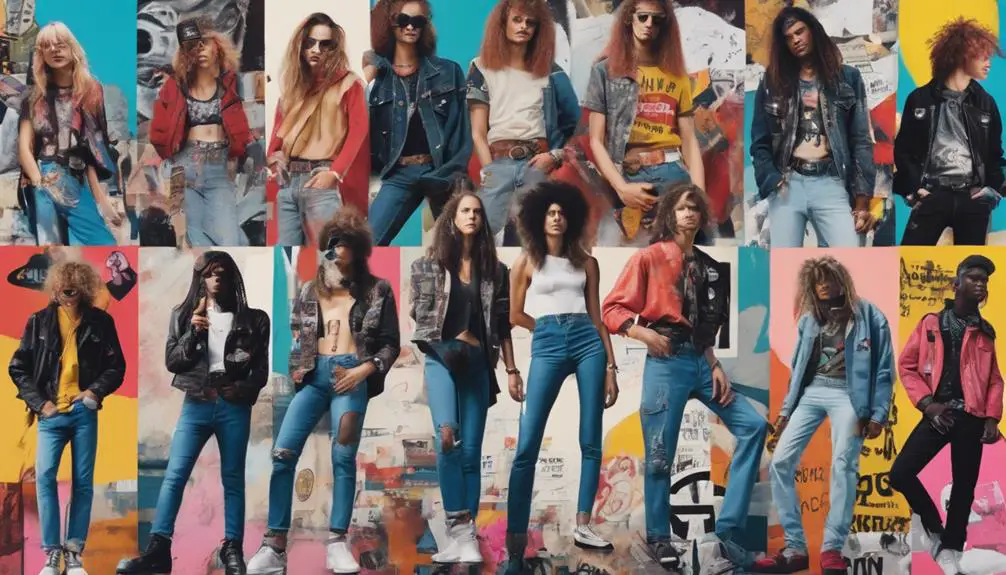
The resurgence of skinny jeans in the 2000s marked a significant cultural moment, intertwining fashion with self-expression and identity. You might not realize it, but these jeans became a cultural symbol of rebellion and nonconformity, echoing the styles of counterculture icons like James Dean and Elvis Presley from the 1950s. Fashion icons such as Kate Moss propelled skinny jeans into mainstream consciousness, transforming them from niche items into essential wardrobe staples.
As you navigate through the late 2000s, the emo trend emerged, further solidifying skinny jeans as a universal choice for diverse demographics. These jeans weren't just about style; they represented youth identity and were embraced by various subcultures, influencing music, film, and art. With each new generation, skinny jeans shaped societal perceptions of how individuals express themselves through fashion.
Despite their popularity, skinny jeans also reflect broader societal shifts, particularly with the rise of the body positivity movement. As comfort and inclusivity became priorities in fashion, the skinny jeans phenomenon began to evolve. While some may have moved away from the tight fit, the cultural impact of skinny jeans remains undeniable. They played a critical role in redefining what it means to dress confidently, demonstrating that fashion is as much about comfort and self-acceptance as it is about looking good. So, whether you love or loathe them, skinny jeans will forever hold a significant place in the tapestry of cultural expression.
Rise to Popularity in the 2000s
In the 2000s, skinny jeans burst onto the fashion scene, quickly transforming into a must-have item for style-savvy individuals. This resurgence began with the launch of 7 for All Mankind in 2000, which positioned jeans as a high-fashion item rather than just casual wear. The pivotal moment came with Hedi Slimane's 2003 Dior Homme collection, which popularized skinny jeans within the indie rock culture, while contrasting sharply with the baggy silhouettes that had dominated the 90s, such as the iconic Levis 501 and 550. Suddenly, both men and women were sporting these form-fitting jeans, creating a new wave of fashion excitement.
Celebrities played an essential role in amplifying this trend. Iconic figures like Kate Moss showcased skinny jeans, and her memorable 2005 appearance sparked widespread adoption and media acclaim. As you walked through the streets or flipped through magazines, you couldn't escape the sight of celebrities flaunting their favorite pairs. The emo movement in the late 2000s further propelled skinny jeans into the spotlight, making them fashionable for a broader audience, transcending gender norms.
Decline and Changing Trends
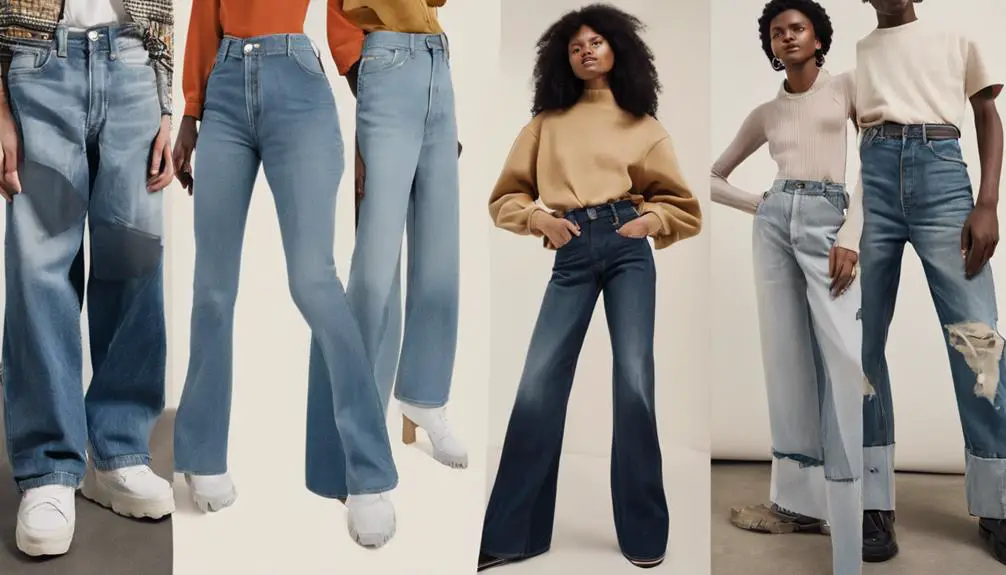
Fashion trends are notoriously fickle, and skinny jeans are no exception. The COVID-19 pandemic in 2020 marked a significant decline in jeans sales as comfort became the priority for many consumers. With more people working from home, sweatpants and loungewear took center stage, pushing skinny jeans to the sidelines. Fast forward to 2021, and a TikTok trend dubbed "no skinny jeans" revealed a cultural shift, leading to a whopping 97% increase in sales of wide-legged jeans. This movement, largely championed by Gen Z, embraced body positivity and challenged traditional beauty standards, encouraging looser fits over the restrictive nature of skinny styles.
While skinny jeans faced a notable decline in popularity, it's noteworthy that over 70% of men's denim sales still come from slim-stretch styles. This showcases that, despite changing trends, there's still a loyal fan base for skinny jeans among certain demographics. However, the fashion landscape continues to evolve, with baggier styles capturing the attention of fashion enthusiasts everywhere.
As the industry tries to keep pace, brands like Gucci and Saint Laurent have made attempts to reintroduce skinny jeans on runways, but the call for comfort and inclusivity remains strong. Ultimately, as fashion trends shift, it's clear that the legacy of skinny jeans is being rewritten, and you may find yourself drawn to the more relaxed silhouettes that better reflect the current cultural climate.
Fashion Industry Responses
As brands navigate the evolving denim landscape, they're finding ways to adapt to shifting consumer preferences while still acknowledging the enduring appeal of skinny jeans. Despite the current popularity of baggier styles, high-fashion brands like Gucci and Saint Laurent have boldly reintroduced skinny jeans on their runways, proving that this classic silhouette remains relevant. Market statistics reveal that over 70% of men's denim sales still come from slim-stretch styles, underscoring their lasting appeal. Additionally, vintage styles, particularly those reminiscent of the 1990s, are making a comeback, aligning with the cyclical nature of fashion trends, where styles often recycle, leading to potential resurgences of beloved pieces, such as vintage Ralph Lauren identifiers.
Celebrity sightings in skinny jeans have also created mixed signals within the fashion world. High-profile endorsements can elevate the visibility of skinny jeans, even as the general trend leans toward looser fits. This phenomenon highlights the cyclical nature of fashion trends, where styles often recycle, leading to potential resurgences of beloved pieces.
Retailers have taken notice, maintaining a diverse retail inventory that includes both skinny jeans and the current favorites of wide-leg and relaxed fits. This strategy allows consumers to choose their preferred styles while reflecting the ongoing evolution in denim preferences. The fashion industry is a dynamic arena, always responding to consumer desires and iconic influences. By showcasing variations of skinny jeans at fashion weeks, brands not only celebrate this style but also demonstrate their commitment to catering to a wide range of tastes. Ultimately, the fashion industry's response to skinny jeans illustrates a balancing act between honoring tradition and embracing innovation.
Future of Skinny Jeans
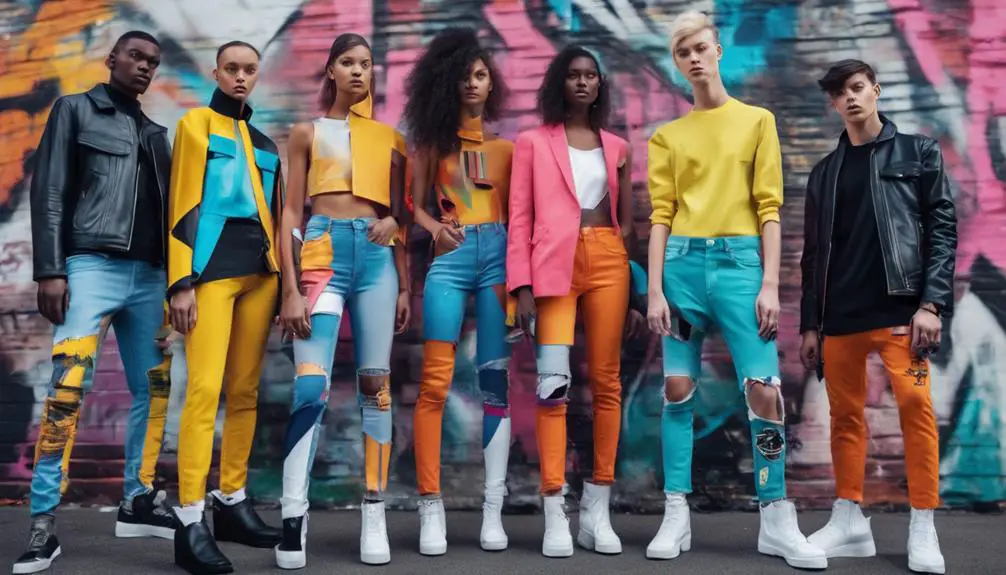
Will skinny jeans make a comeback, or have they truly faded into the background? The future of skinny jeans is a fascinating topic, especially considering the cyclical nature of fashion. Despite current trends leaning toward looser fits, market statistics reveal that over 70% of men's denim sales still stem from slim-stretch styles. This enduring appeal suggests that skinny jeans aren't completely out of the picture.
Interestingly, much like the evolution of Nike's brand history, fashion trends often experience a resurgence as nostalgia influences consumer choices. Major fashion brands like Gucci and Saint Laurent have even showcased these beloved styles at runway shows, signaling a desire to revive them in today's fashion landscape. This is especially relevant as we observe retro revivals influenced by millennial nostalgia and the ever-evolving consumer demand for variety.
Moreover, advancements in fabric technology are paving the way for innovative designs, merging the classic skinny cut with modern aesthetics. Imagine a hybrid style that offers both comfort and sustainability while retaining that sleek silhouette you adore! As trends continue to shift, it's likely that skinny jeans will adapt, incorporating new materials and techniques that enhance their appeal.
With the fashion scene constantly in flux, it's exciting to think about the potential return of skinny jeans, possibly reinvigorated by fresh designs and styles. So, keep an eye on the runways and your favorite brands; you may just find that skinny jeans are gearing up for a stylish comeback!
Frequently Asked Questions
Where Did Skinny Jeans Originate From?
Skinny jeans originated from fashion evolution, blending vintage styles with innovative tailoring techniques. Their cultural significance grew through celebrity influence, shaping denim types that resonated with various subcultures, ultimately leading to widespread adoption and brand innovations.
When Did Emos Start Wearing Skinny Jeans?
Emos started wearing skinny jeans in the early 2000s, influenced by music trends and cultural influences. This style evolution became a key fashion statement within the youth subculture, defining emo fashion and expressing individuality.
When Were Ripped Skinny Jeans Popular?
You might think ripped skinny jeans were just a passing fad, but they thrived in the early 2000s, fueled by celebrity influence, youth culture, and music impact, evolving into iconic fashion statements within street style.
Who Started Skinny Jeans in Hip Hop?
You'll notice hip hop's denim evolution began with artists like Lil Wayne and Kanye West. Their celebrity influence in music videos and street style reshaped fashion trends, making skinny jeans iconic in the culture's cultural impact.
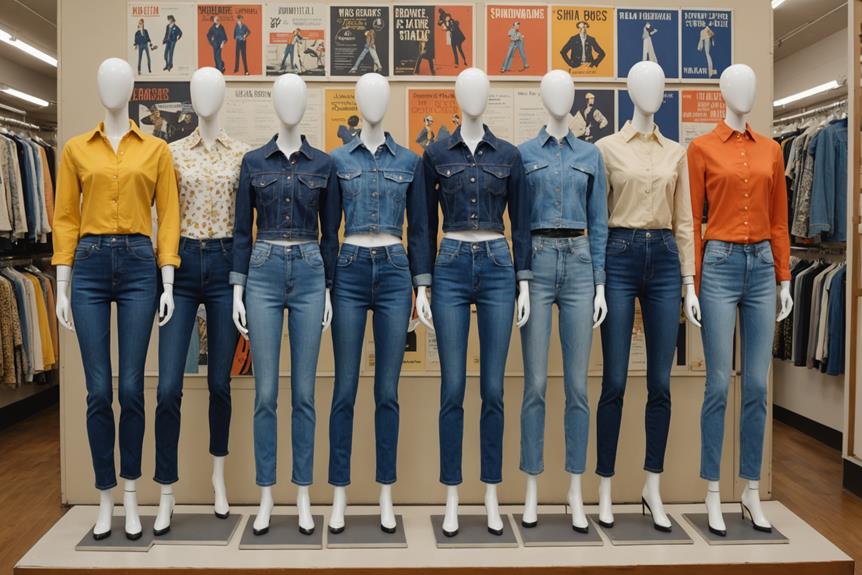


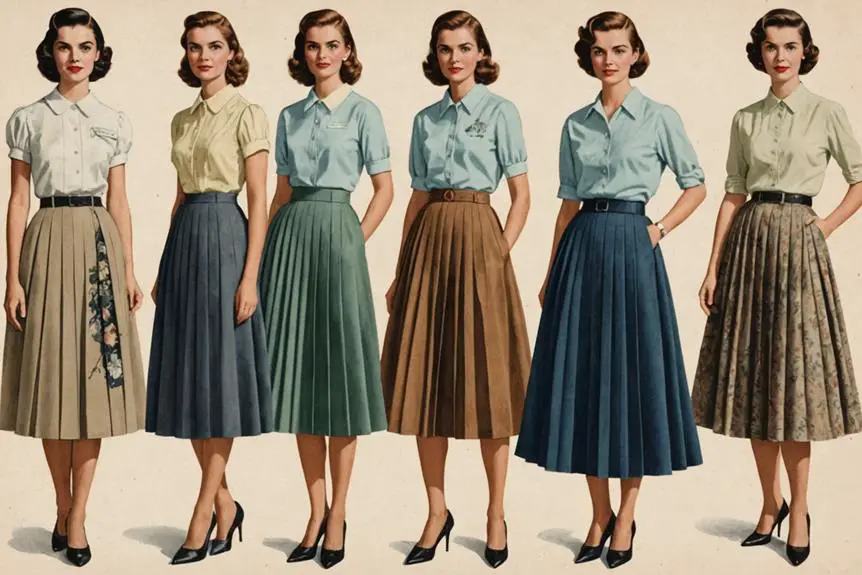

It’s really very complicated in this active life to
listen news on Television, so I only use world wide web for that purpose, and take the most up-to-date information.
web site
Hey there! This is kind of off topic but I need some guidance from an established blog.
Is it tough to set up your own blog? I’m not very techincal but
I can figure things out pretty fast. I’m thinking about creating my own but I’m not sure
where to begin. Do you have any points or
suggestions? Thank you
casino en ligne
Wonderful article! This is the kind of info that are supposed to
be shared around the web. Shame on Google for not positioning this publish upper!
Come on over and visit my website . Thank you =)
casino en ligne
You actually make it seem so easy along with your presentation however
I in finding this topic to be really one thing which I feel I would
by no means understand. It seems too complicated and very huge for me.
I’m looking forward for your subsequent post, I’ll attempt
to get the grasp of it!
casino en ligne
It’s in reality a great and helpful piece of info.
I am happy that you simply shared this helpful information with us.
Please stay us up to date like this. Thanks for sharing.
casino en ligne
Pretty great post. I simply stumbled upon your
blog and wished to mention that I have really enjoyed browsing your blog
posts. After all I will be subscribing in your feed and I am hoping you write
once more very soon!
casino en ligne
Good article. I will be experiencing some of these issues
as well..
casino en ligne
Good article. I absolutely appreciate this website.
Thanks!
casino en ligne
Thanks for sharing your thoughts about sss. Regards
casino en ligne
Aw, this was an extremely nice post. Taking a few minutes and actual effort to create a really good article… but what can I say… I
procrastinate a lot and never manage to get nearly anything done.
casino en ligne